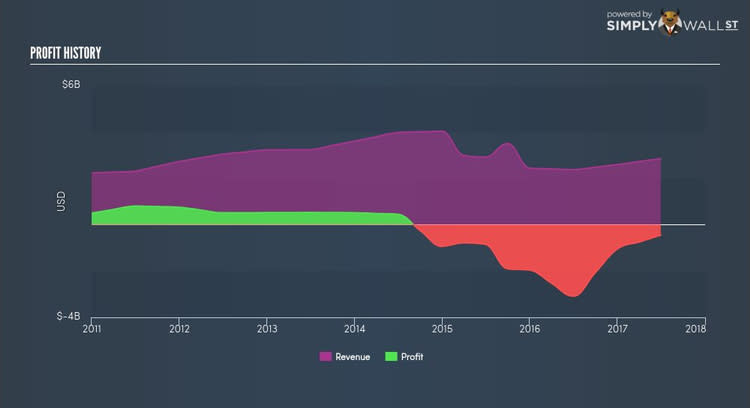Santos Limited (ASX:STO): What Does It Mean For Your Portfolio?

If you are a shareholder in Santos Limited’s (ASX:STO), or are thinking about investing in the company, knowing how it contributes to the risk and reward profile of your portfolio is important. The beta measures STO’s exposure to the wider market risk, which reflects changes in economic and political factors. Not all stocks are expose to the same level of market risk, and the market as a whole represents a beta of one. Any stock with a beta of greater than one is considered more volatile than the market, and those with a beta less than one is generally less volatile.
Check out our latest analysis for Santos
An interpretation of STO's beta
Santos’s five-year beta of 1.93 means that the company’s value will swing up by more than the market during prosperous times, but also drop down by more in times of downturns. This level of volatility indicates bigger risk for investors who passively invest in the stock market index. According to this value of beta, STO can help magnify your portfolio return, especially if it is predominantly made up of low-beta stocks. If the market is going up, a higher exposure to the upside from a high-beta stock can push up your portfolio return.
How does STO's size and industry impact its risk?
STO has a market capitalization of AUD $8.35B, putting it in the category of established companies, which are found to experience less relative risk compared to small-sized companies. However, STO operates in the oil, gas and consumable fuels industry, which has commonly demonstrated strong reactions to market-wide shocks. Therefore, investors can expect a low beta associated with the size of STO, but a higher beta given the nature of the industry it operates in. It seems as though there is an inconsistency in risks from STO’s size and industry. There may be a more fundamental driver which can explain this inconsistency, which we will examine below.
How STO's assets could affect its beta
During times of economic downturn, low demand may cause companies to readjust production of their goods and services. It is more difficult for companies to lower their cost, if the majority of these costs are generated by fixed assets. Therefore, this is a type of risk which is associated with higher beta. I examine STO’s ratio of fixed assets to total assets to see whether the company is highly exposed to the risk of this type of constraint. Given a fixed to total assets ratio of over 30%, STO seems to be a company which invests a big chunk of its capital on assets that cannot be scaled down on short-notice. As a result, this aspect of STO indicates a higher beta than a similar size company with a lower portion of fixed assets on their balance sheet. This is consistent with is current beta value which also indicates high volatility.
What this means for you:
Are you a shareholder? You could benefit from higher returns from STO during times of economic growth. Its higher fixed cost isn’t a major concern given margins are covered with high consumer demand. However, in times of a downturn, it may be safe to look at a more defensive stock which can cushion the impact of lower demand.
Are you a potential investor? Before you buy STO, you should factor how your portfolio currently moves with the wider market, and where we are in the economic cycle. This stock could be an outperformer during times of growth, and it may be worth taking a deeper dive into the fundamentals to crystalize your thoughts on STO.
Beta is one aspect of your portfolio construction to consider when holding or entering into a stock. But it is certainly not the only factor. Take a look at our most recent infographic report on Santos for a more in-depth analysis of the stock to help you make a well-informed investment decision. But if you are not interested in Santos anymore, you can use our free platform to see my list of over 50 other stocks with a high growth potential.
To help readers see pass the short term volatility of the financial market, we aim to bring you a long-term focused research analysis purely driven by fundamental data. Note that our analysis does not factor in the latest price sensitive company announcements.
The author is an independent contributor and at the time of publication had no position in the stocks mentioned.

